The skies opened, thunder cracked, and the many faces of Bayon watched as we scurried into an alcove to avoid getting soaked to the skin. It was the kind of rain that gave you no time to react; the kind of rain that was loud as it bounced back up off the stonework.
I frantically pulled out a temporary raincoat that someone had given us in Chiang Mai a few weeks earlier. Angela helped me cover my camera gear with it – I didn’t care if I got wet, but my camera gear had to be protected at all costs. The smell of bat dung filled our nostrils as we jammed ourselves against a wall in an alcove that looked like it would provide some basic protection. We were as dry as we could hope for (which is to say, not that dry), and once we caught our breath the rain – no longer an adversary – became beautiful; it was hypnotic watching something so powerful rip through this gorgeous temple, the faces unfazed, the trees of the jungle swaying in the storm.
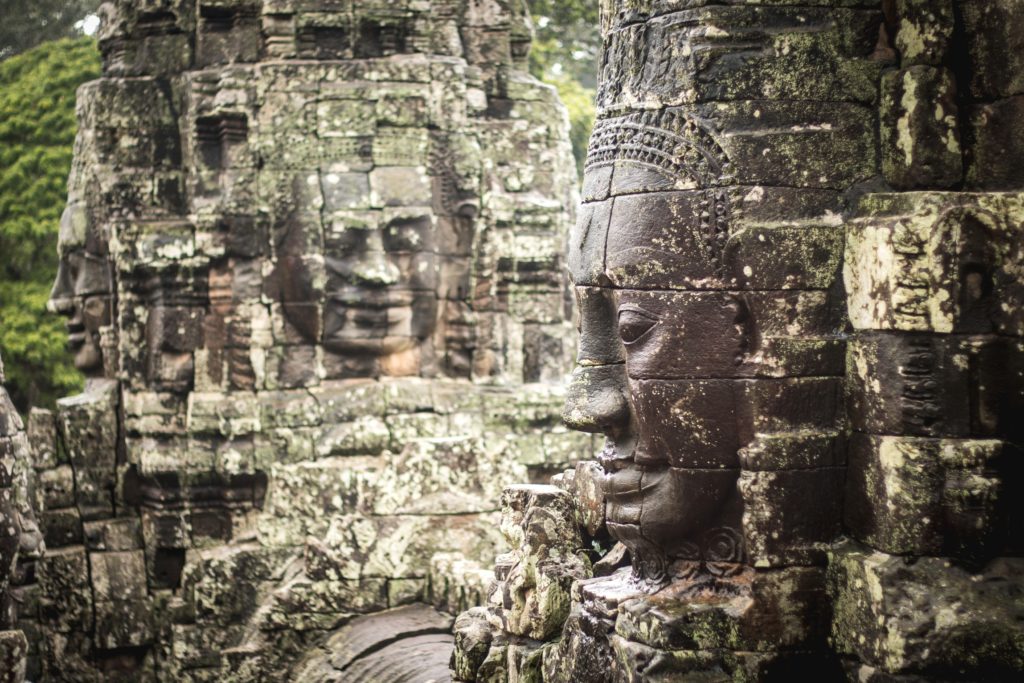
This was our second trip to Bayon in three days. As our favourite temple in the Angkor region, we chose to return. On our first trip through Bayon I had felt a bit rushed, so I really wanted to take my time and enjoy it. The rain guaranteed there would be no rushing this time. I was picturing our tuk tuk driver, waiting outside the gates, sleeping in the hammock he had rigged up between the seats, and wondered if he was getting wet.
Bayon is a fascinating place. Well, I guess that depends on what you find fascinating, but to me, Bayon is a fascinating place. Built in the late 12th and into the 13th centuries, it was originally constructed as a Mahayana Buddhist temple. Later modified to suit leaders who preferred the temple to be Hindu and then Theravana Buddhist, Bayon has served many masters. Through it all, the 200+ faces carved into the towers on the upper level, watched.
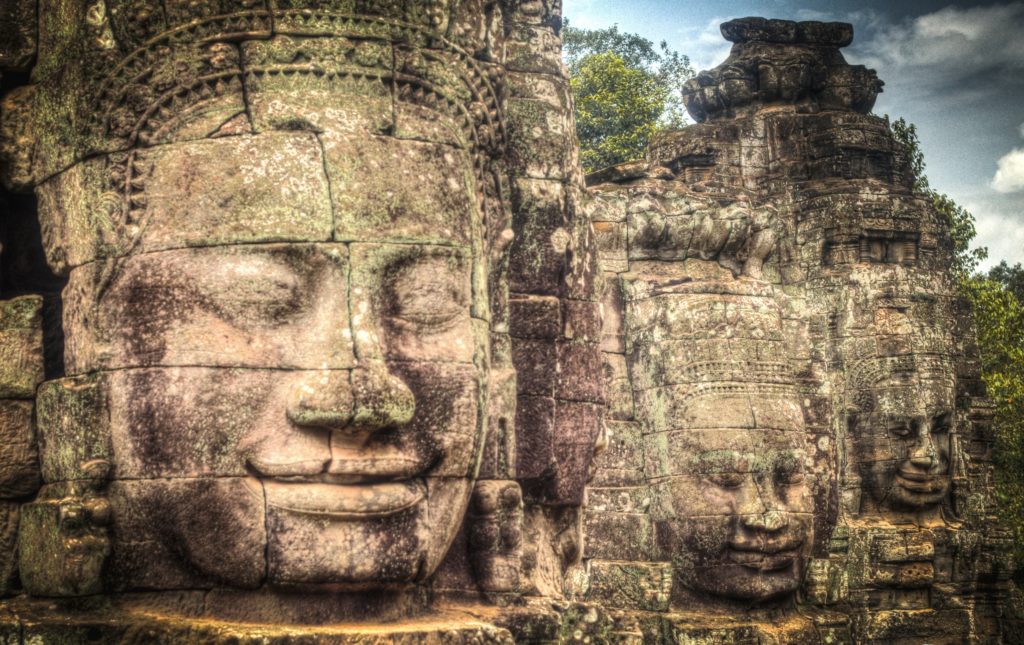
The faces are serene. While I found this temple to have something of a mystical quality, I didn’t find the faces to be disconcerting at all. “They’re spooky,” I had heard another traveller comment as she entered the top level of the temple; I disagree – the faces are calm, reassuring…even content. Considering all the demonic, threatening, and generally vicious carvings you might see in Southeast Asia, I found the faces of Bayon to be a delight. There are various theories on who the faces represent, but the one I found to be most consistent was that they were to represent Lokeshvara, the Bodhisattva of compassion. Others believe there are similarities to Jayavarman VII, the king who was in power when Bayon was constructed.
The rain lasted about twenty minutes. We emerged from the alcove to find others sliding out from between various nooks and crannies. To someone viewing the temple from above it must have looked like ants scurrying out after the guy with the can of Raid has given up and gone home.
We enjoyed exploring at a leisurely pace, taking in the faces, looking out at the jungle, and generally marvelling at this surreal place. Looping back around to the front, and making our way back down to the first level, we decided to tackle the temple again from the front gate. When we had first arrived the lower levels were busy with hordes of tourists; now the rain had chased most of them away, so we had the place as much to ourselves as anyone might ever have Bayon to themselves. This changed the experience dramatically, so we went back for another look.
The front gates – and your first glance – of Bayon is meant to conjure images of Mount Meru, which according to Wikipedia (I had to look it up) is “the sacred five-peaked mountain of Hindu, Jain, and Buddhist cosmology and is considered to be the center of all the physical, metaphysical and spiritual universe”.
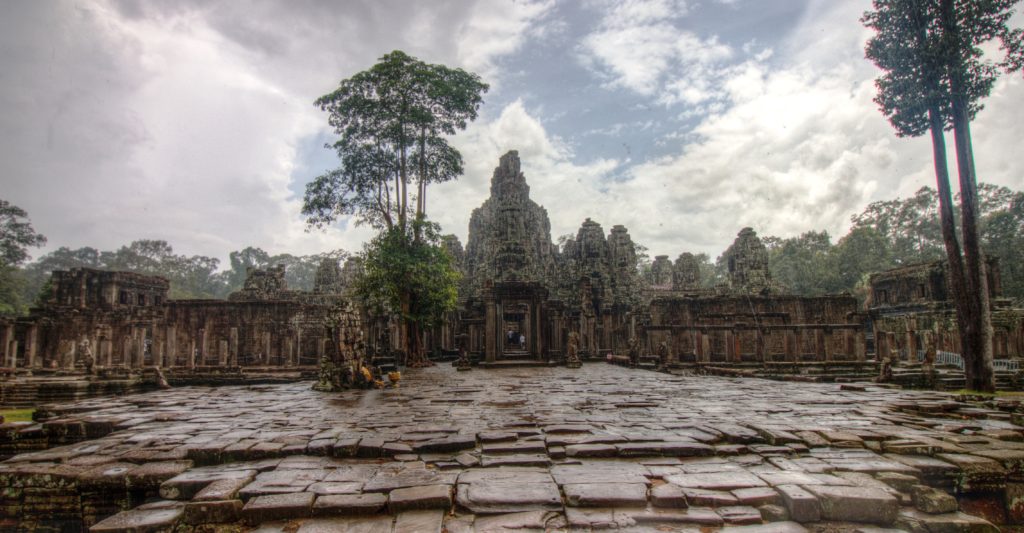 On first viewing, Bayon isn’t nearly as impressive as many of the other temples in the region. It takes a bit of exploration to discover the magic of this place.
On first viewing, Bayon isn’t nearly as impressive as many of the other temples in the region. It takes a bit of exploration to discover the magic of this place.
Bayon is built on three levels. The first two feature carvings and bas reliefs, thousands of them scattered throughout the temple…
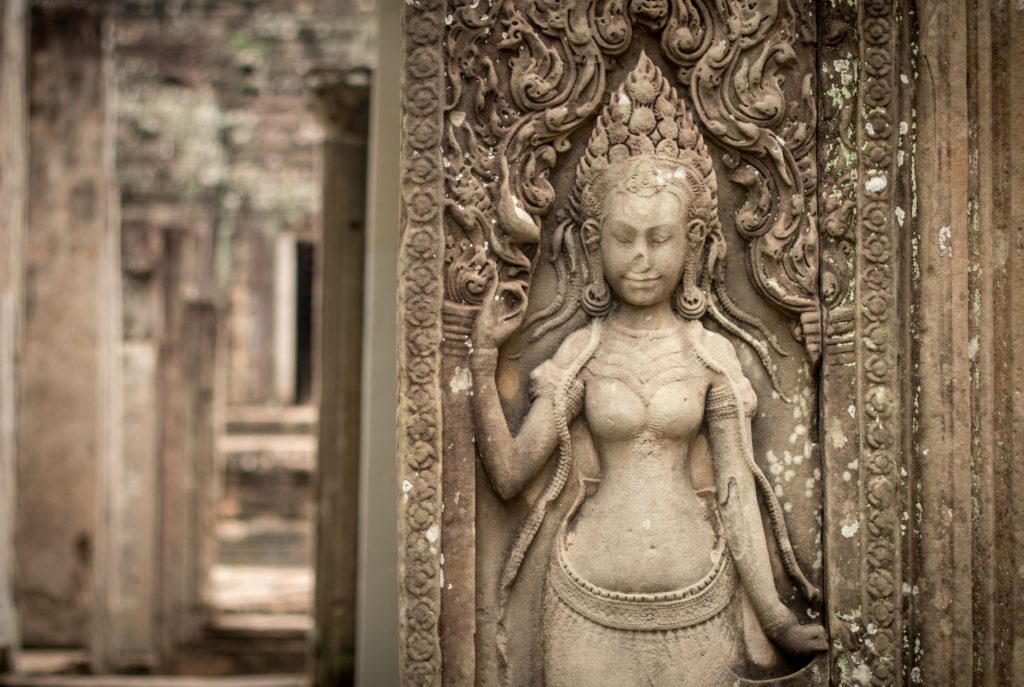
…including one truly exceptional large panel to the left of the main entrance on the first level. Here’s a small section:
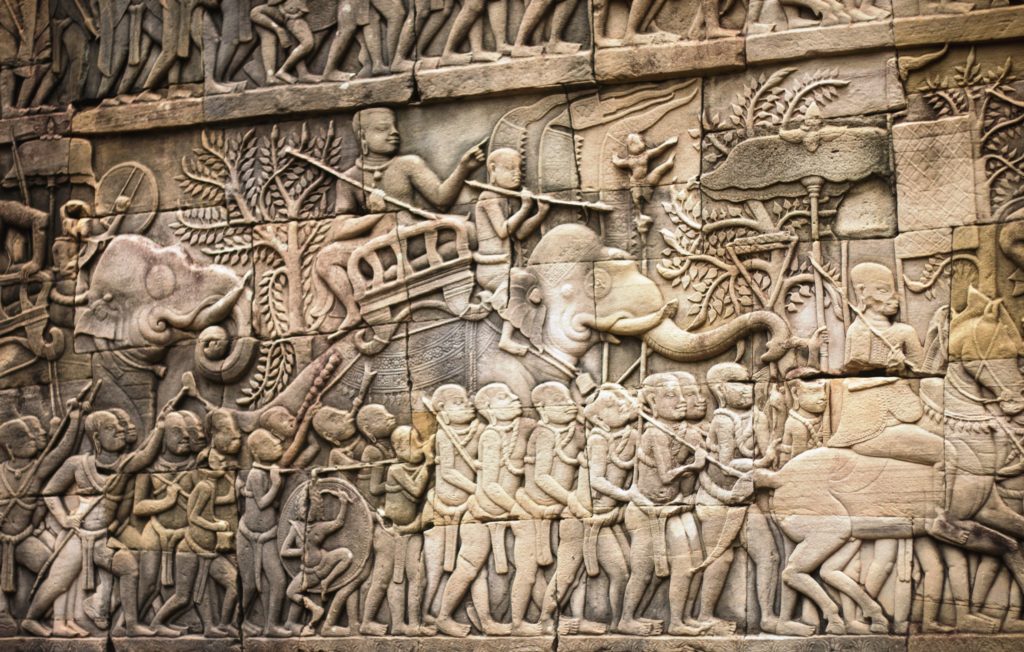
To give you a sense of how woefully inadequate the above photo is in representing this amazing work, check out the short video below that Angela shot on her iPhone:
Slipping around the side of the massive bas relief, we walked through a large courtyard where open doors provided access to small, dark open rooms. A Buddha resided in one of them, so a few people were quietly praying as we walked past.
On our first trip to Bayon a couple of days prior, a group of monkeys were hanging out on this side of the temple. For the most part they left us alone but for this one guy who was either thirsty, a thief, or – my guess – a thirsty thief. He tried to steal our guide Cocoa’s water bottle, but she was having none of it.
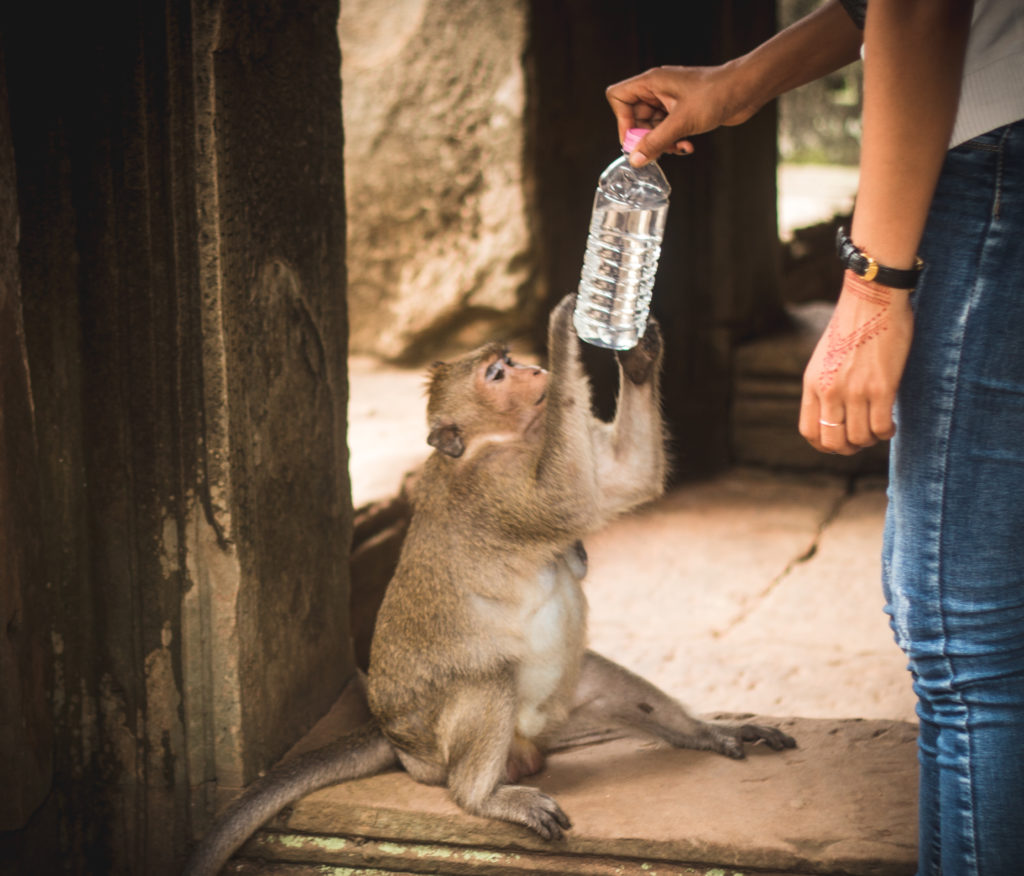
On this trip we were disappointed to find no thieving monkeys anywhere in sight. The weather probably scared them off to wherever monkeys go to dodge the rain. Sneaking further around the side, we found the staircase that would bring us back up to the third level, home to the towers and faces that bring Bayon its fame. It was amazing to have the place to ourselves.
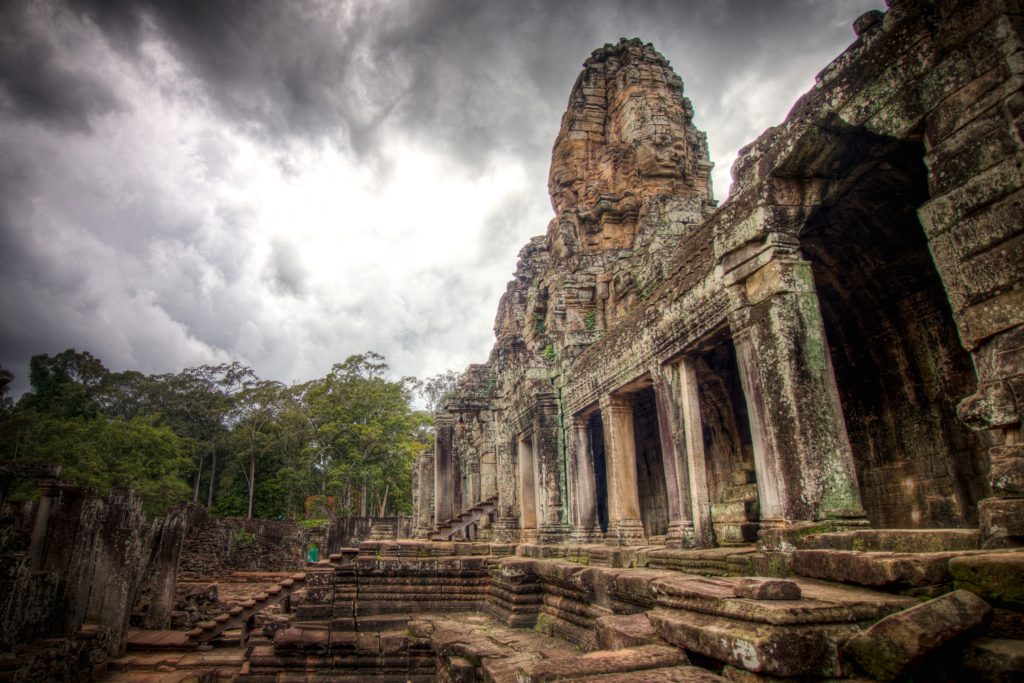
We climbed back up, taking in the first few faces that look out at the jungle. The jungle is thick in this part of Angkor Thom, but apparently it used to be much worse. In 1910 the jungle had almost totally overrun the temple, so a massive restoration effort took place to chop Bayon out.
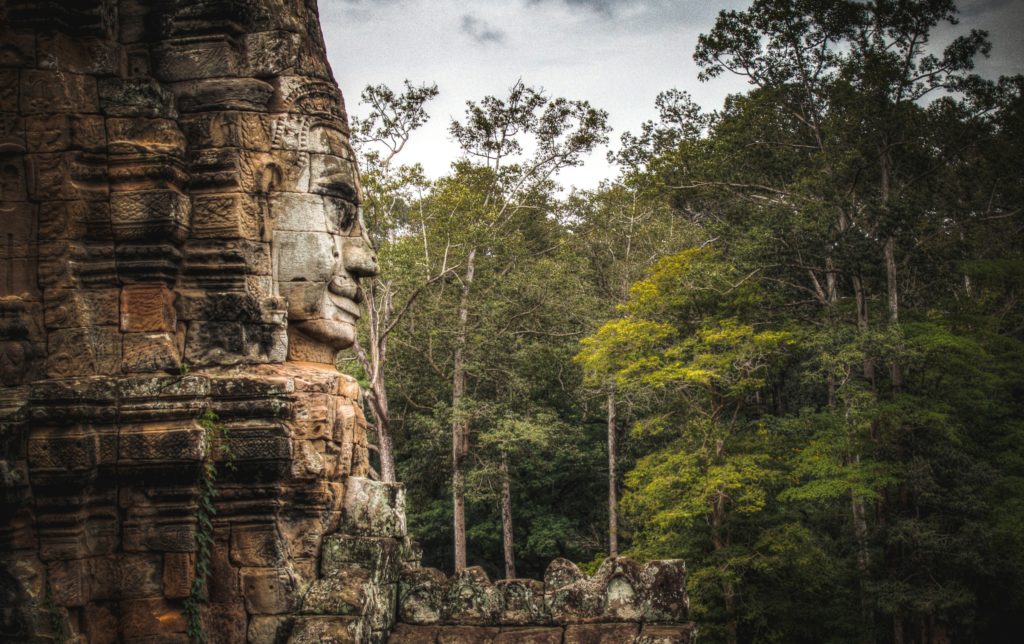
With that, we were back in the middle of the faces of Bayon, the spot where the rains had first hit. It had been a great morning of exploration, and I know I’ll be back. It’s a unique temple, one that stands out in a region known for unique temples.
Going to bed that night, I couldn’t shake the feeling I was being watched… 😉
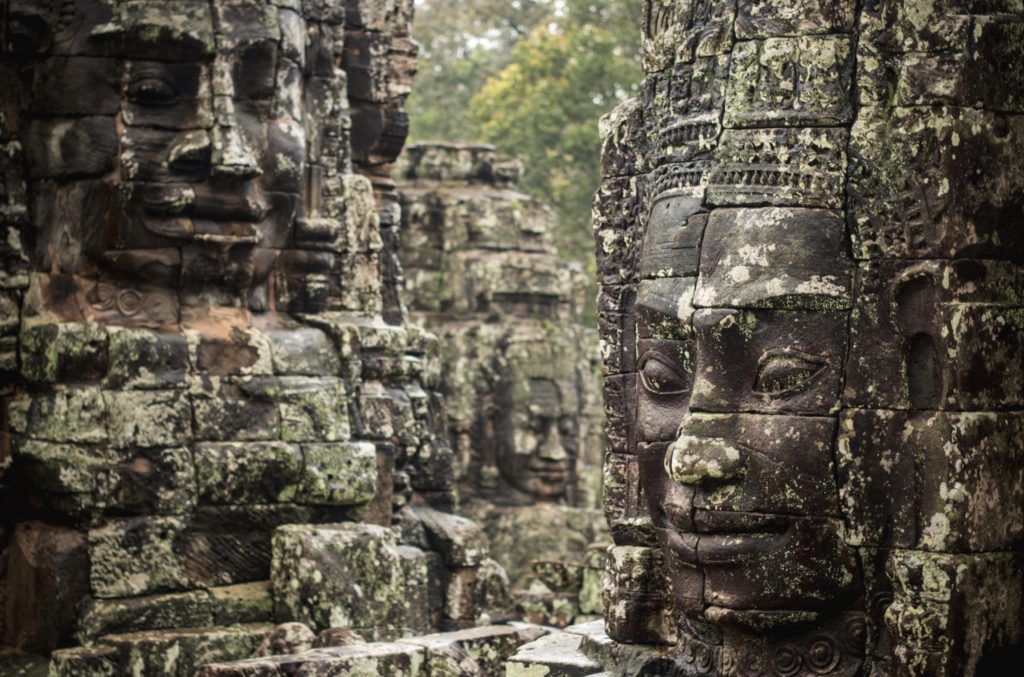
KEY INFO:
Location: Bayon is located smack in the middle of Angkor Thom, an easy tuk tuk ride from Angkor Wat.
Price: Included in your admission ticket to the Angkor complex. 2018 prices are:
One-day Angkor Wat Park Pass: $37 USD
Three-day Pass: $62 USD
Seven-day Pass: $72 USD
For more on visiting Angkor Wat, check out my previous blog post: Missing the Sunrise at Angkor Wat.
Have you visited Bayon? If so, what did you think? If not, what are your impressions? Comment below – cheers!

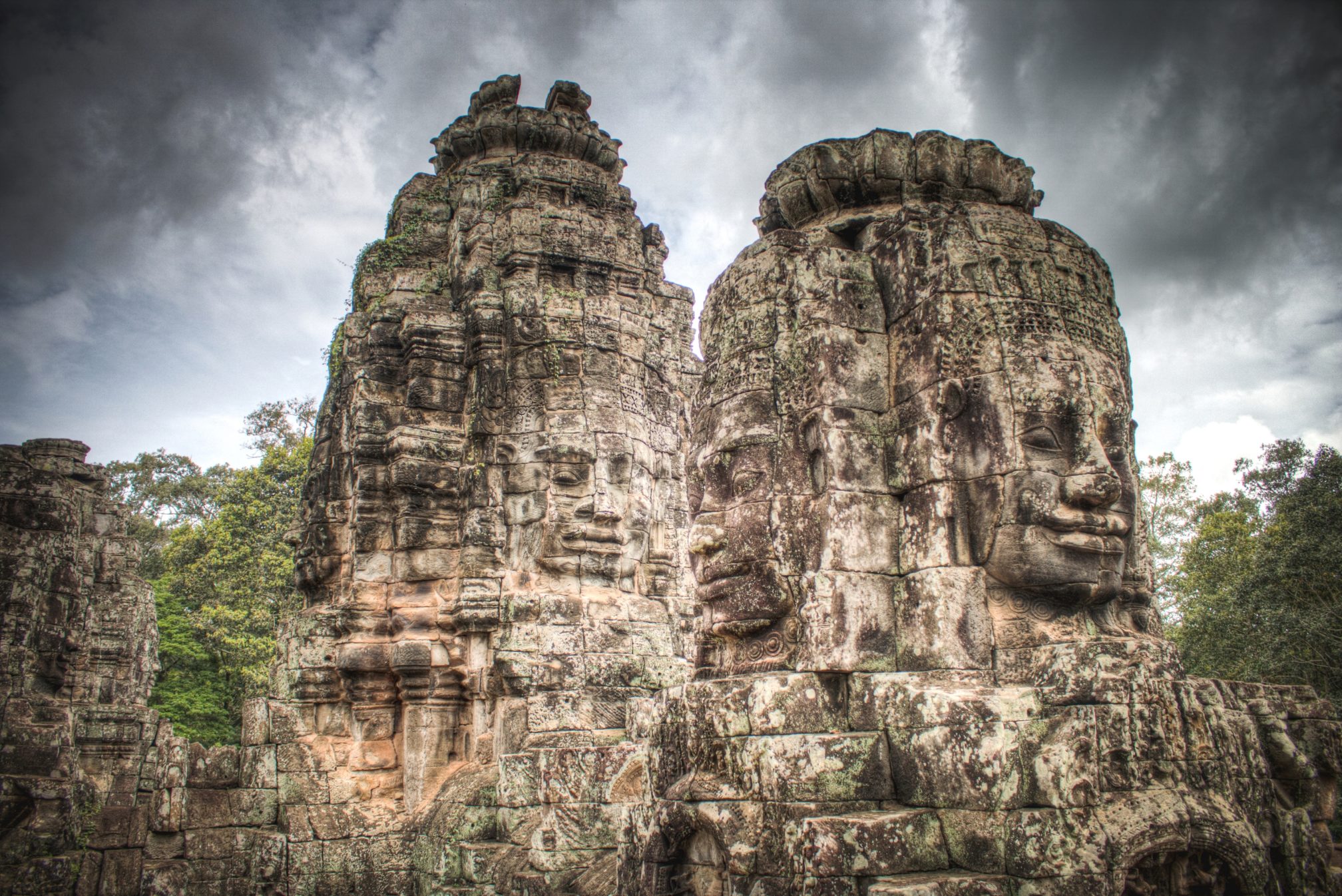
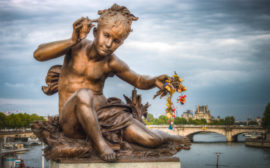
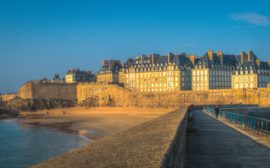
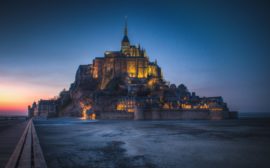
It’s funny how you say you were disappointed not to find thieving monkeys anywhere in sight. lol
Haha, thanks Safari. I find monkeys entertaining, as long as you stay sharp around them. These ones weren’t too aggressive on our previous visit (despite the attempted water theft), so we missed them on the last one. Thanks for the comment!